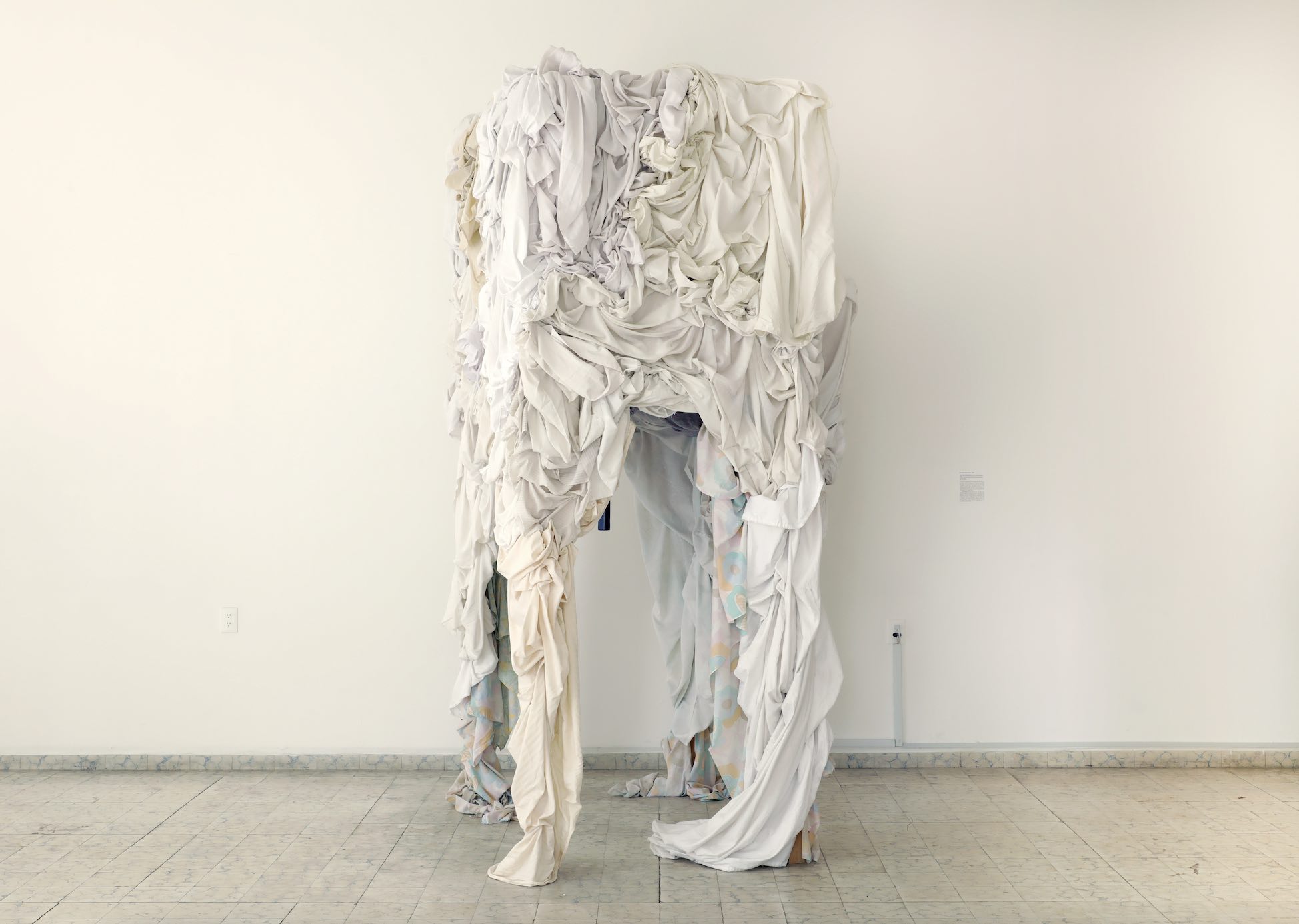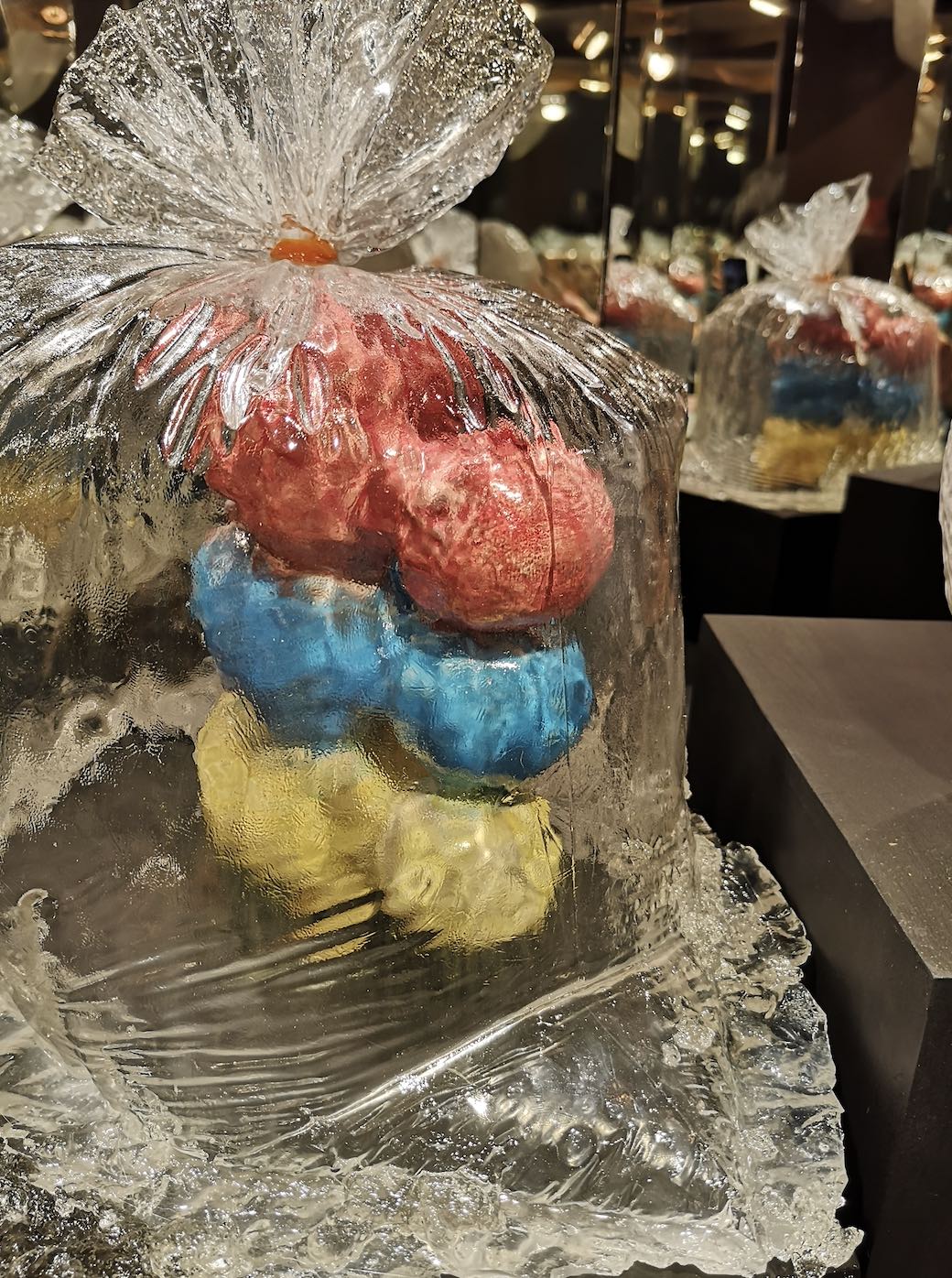![And Suddenly…A Show! On Teoría de la Generación Espontánea [Spontaneous Generation Theory] at SOMA](https://firebasestorage.googleapis.com/v0/b/prod-ondamx-art.appspot.com/o/media%2F1634350009337-1.jpg?alt=media&token=1516b2cd-f10c-4d64-8c53-8b2ff0720e51)
Review
And Suddenly…A Show! On Teoría de la Generación Espontánea [Spontaneous Generation Theory] at SOMA
by Bruno Enciso
Reading time
5 min
Once again, the graduating class of artists from the SOMA educational program is presenting their work in an exhibition. Beginning with its title, Teoría de la Generación Espontánea [Spontaneous Generation Theory], the show offers a self-reflective exercise, a disclaimer: where presumably there is now a class or a generation [generación], there had once been dispersion. And it is not only a matter of finding a selection of pieces that need not have anything in common, but also of integrating the participants’ contrasts and imbalances into the logic of organization and design of this exhibition, the one joining them together. One must look to see that these differences operate as forces: say, that a generation produces something more than a new entry in the history of an institution. Teoría de la generación espontánea presents the work of Jonathan Cerón, Andrea Ferrero, Laia Giol Carreño, Fernando González, Juan Carlos León, Enrique López Llamas, Elisa Malo, cecilia miranda gómez, kendy rivera, Alan Sierra, and Yorely Valero.

Each project uses a different methodology that in turn nourishes the exhibition. It’s possible to identify some points of intersection. The projects by cecilia and Jonathan share a key in formal and poetic experimentation, while kendy, Andrea, and Fernando critically review specific sociocultural formations and their symbols. Both Yorely and Alan investigate and rehearse curious tropes whose complexities affect everyday life in almost imperceptible ways. For their part, Juan Carlos and Enrique recover significant personal experiences with the aim of exploring them and finding new routes of agency. Laia and Elisa construct devices allowing them to speculate on domestic situations in which there proliferate questions and relationships between the body and subjectivity. Each one demands its own time.

In my experience visiting the exhibition, what stood out was the unsettling Museo Objeto del Sueño [Dream Object Museum], by Elisa Malo. It concerns a machine-creature in whose jaws one finds the entrance to a strange dimension, and where some images from the artist’s dreams are suspended in a kaleidoscopic atmosphere. Its massive four-legged structure, almost three meters high, is covered in used sheets, donated by friends and acquaintances. These are sheets that have “already dreamt” [ya soñadas], she says. From this swirling and whitish skin there emanates a distressing and seductive energy, inviting you to revisit the shocking dreams that each one has had. Also, in order to activate the device’s internal machinery, two people are required: one for turning a crank and the other for watching the moving images. These people do not face each other but nevertheless work as a team, sharing an intimacy. The piece avoids approaching the elusive flows of the dream with voracious descriptive intentions; rather, it produces an anomalous and playful experience that inquires into the presence of dreams in waking life.

The Publication
The publication that accompanies the exhibition displays contents of different natures and densities throughout its more than 200 pages. There are written and visual essays, poetry, photos, songs, and profiles, among other things. Among the participating authors are the artists themselves, some SOMA teachers, and a couple of guests. The modes of authorship also vary: teachers write with students, students with students, or alone. Not everyone has the same number of appearances. We find here, all mixed together, conspicuous editorial planning, pleasant experimental pacing, and a load of content that feels vast and generous.
![Juan Carlos León, Colonizar el fin [Kallumpakunamikan shunku / Kuyllur], 2021. Courtesy of SOMA](https://firebasestorage.googleapis.com/v0/b/prod-ondamx-art.appspot.com/o/media%2F1634349908935-4.jpg?alt=media&token=b0357e2e-7ca3-4897-8b10-c91917050954)
The Cancionero [Songbook] section brings together a collection of lines that each artist has extracted from songs related to their project. Before or following the live visit, attending to this selection helps one to get closer to the folds of each piece, to the spirit of its producers. It is not required that the projects be accounted for by the lyrics in their literality, but that they be associated with a tone, an atmosphere. Another interesting section is Pedradas desde la oscuridad [Stones Thrown from the Dark], in which participants write from a shared anonymity about the things that bother them in the artistic profession. They are short and raw messages that oscillate between tones of confession, boredom, and testimony. Without flaunting a revolutionary glow, these dark pages serve as a bitter reminder that art productions are not only sustained by dynamics of grace and virtue. On top of it all: this book must be read with care.
Additional content can be found on SOMA’s Instagram account and on its YouTube channel, where the records of the public program are hosted. The exhibition will remain open until October 23 and can be visited by scheduling an appointment through the portal espontanea.net. The digital version of the publication is available for download on the same site.
Translated to English by Byron Davies
Cover picture: kendy rivera, amos, 2021. Vinyl on wall. Courtesy of SOMA
Published on October 16 2021